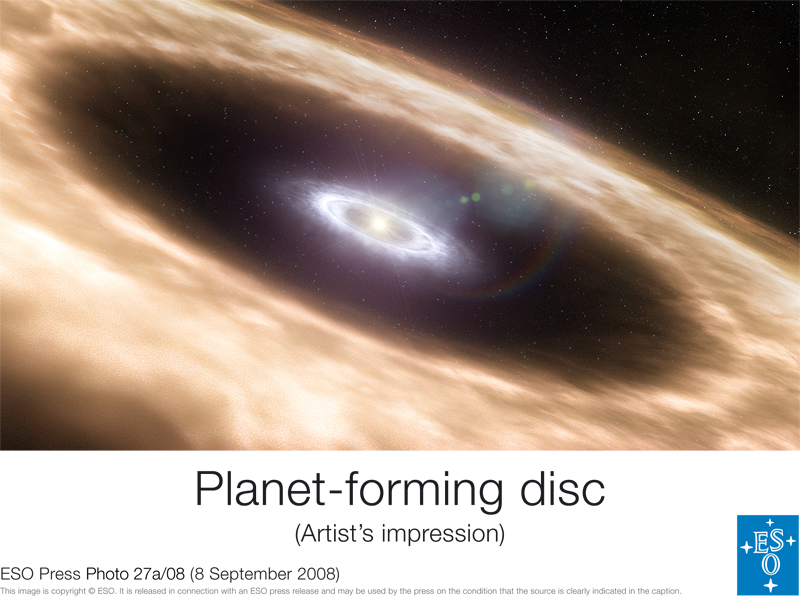Using a new technique with a near-infrared spectrograph attached to ESO’s Very Large Telescope, astronomers have been able to study planet-forming discs around young Sun-like stars in unsurpassed detail, clearly revealing the motion and distribution of the gas in the inner parts of the disc. Astronomers used a technique known as ‘spectro-astrometric imaging’ to give them a window into the inner regions of the discs where Earth-like planets may be forming. They were able not only to measure distances as small as one-tenth the Earth-Sun distance, but also measure the velocity of the gas at the same time. “This is like going 4.6 billion years back in time to watch how the planets of our own Solar System formed,” says Klaus Pontoppidan from Caltech, who led the research.
Pontoppidan and colleagues have analyzed three young analogues of our Sun that are each surrounded by a disc of gas and dust from which planets could form. These three discs are just a few million years old and were known to have gaps or holes in them, indicating regions where the dust has been cleared and the possible presence of young planets. However, each of the discs are very different from each other and likely will result in very different planetary systems. “Nature certainly does not like to repeat herself,” said Pontoppidan.
For one of the stars, SR 21, a massive giant planet orbiting at less than 3.5 times the distance between the Earth and the Sun has created a gap in the disc, while for the second star, HD 135344B, a possible planet could be orbiting at 10 to 20 times the Earth-Sun distance. Observations of the disc surrounding the third star, TW Hydrae, may indicate the presence of one or two planets.
The new results not only confirm that gas is present in the gaps in the dust, but also enable astronomers to measure how the gas is distributed in the disc and how the disc is oriented. In regions where the dust appears to have been cleared out, molecular gas is still highly abundant. This can either mean that the dust has clumped together to form planetary embryos, or that a planet has already formed and is in the process of clearing the gas in the disc.
CRIRES, the near-infrared spectrograph attached to ESO’s Very Large Telescope, is fed from the telescope through an adaptive optics module which corrects for the blurring effect of the atmosphere and so makes it possible to have a very narrow slit with a high spectral dispersion: the slit width is 0.2 arcsecond and the spectral resolution is 100 000. Using spectro-astrometry, an ultimate spatial resolution of better than 1 milli-arcsecond is achieved.
“The particular configuration of the instrument and the use of adaptive optics allow astronomers to carry out observations with this technique in a very user-friendly way: as a consequence, spectro-astrometric imaging with CRIRES can now be routinely performed,” says team member Alain Smette, from ESO.
Source: ESO Press Release


Would such an instrument be able to detect a proto-Kuiper Belt or a proto-Oort Cloud?
This is well cool.